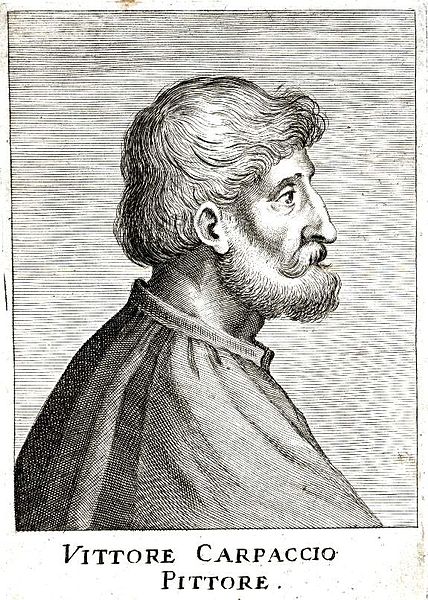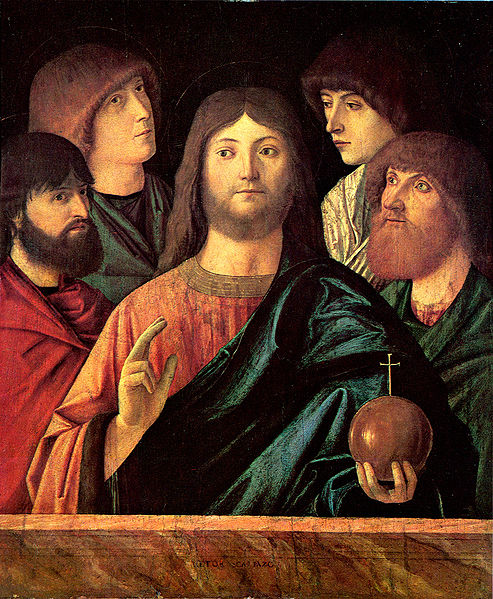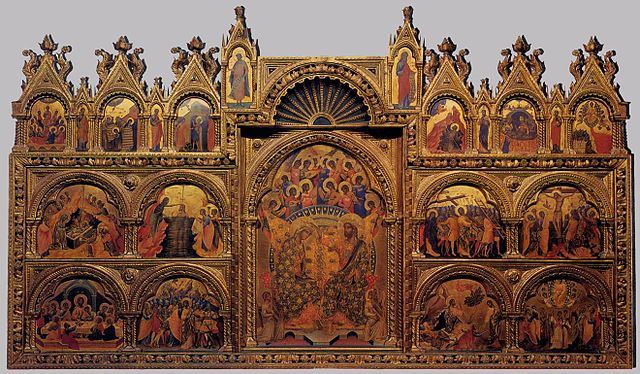Vittore Carpaccio (UK: /kɑːrˈpætʃ oʊ/, US: /-ˈpɑːtʃ-/, Italian: [vitˈtoːre karˈpattʃo]; was an Italian painter of the Venetian school who studied under Gentile Bellini. Carpaccio was largely influenced by the style of the early Italian Renaissance painter Antonello da Messina, as well as Early Netherlandish painting. Although often compared to his mentor Gentile Bellini, Vittore Carpaccio's command of perspective, precise attention to architectural detail, themes of death, and use of bold color differentiated him from other Italian Renaissance artists. Many of his works display the religious themes and cross-cultural elements of art at the time; his portrayal of St. Augustine in His Study from 1502, reflects the popularity of collecting "exotic" and highly desired objects from different cultures.
Portrait by unknown artist, c. 1700
Vittore Carpaccio, Salvator Mundi with Four Saints (c. 1489/90) owned by the Fondazione Luciano Sorlini in Carzago di Calvagese (in Brescia)
St. Augustine in His Study
Detail of Presentation of Jesus in the Temple (1510)
Venetian painting was a major force in Italian Renaissance painting and beyond. Beginning with the work of Giovanni Bellini and his brother Gentile Bellini and their workshops, the major artists of the Venetian school included Giorgione, Titian, Tintoretto (1518–1594), Paolo Veronese (1528–1588) and Jacopo Bassano (1510–1592) and his sons. Considered to give primacy to colour over line, the tradition of the Venetian school contrasted with the Mannerism prevalent in the rest of Italy. The Venetian style exerted great influence upon the subsequent development of Western painting.
Titian, Salome with the Head of John the Baptist c. 1515; this religious work also functions as an idealized portrait of a beauty, a Venetian genre developed by Titian, supposedly often using Venetian courtesans as models.
Canaletto, The Entrance to the Grand Canal, c. 1730, a typical veduta
Giovanni Bellini, San Zaccaria Altarpiece, 1505, a late work, San Zaccaria, Venice
Paolo Veneziano, polyptych altarpiece with Coronation of the Virgin, c. 1350








